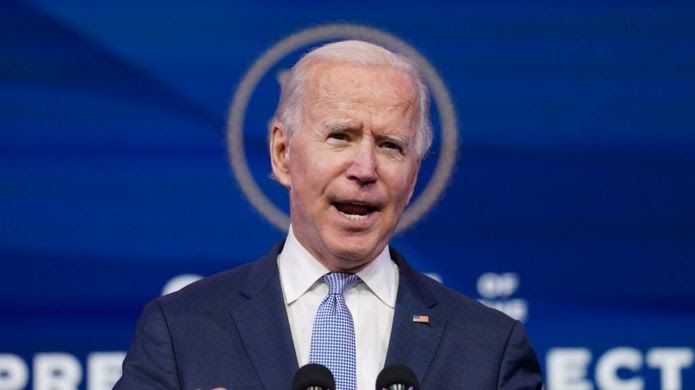United States of America President, Joe Biden, on Wednesday, issued an executive order that would reduce the federal government’s greenhouse gas emissions within the next decade and reach net-zero federal emissions by 2050.
The term “net zero” means that any pollution contributing to climate change would be offset with equal measures to remove greenhouse gases from the atmosphere, such as planting trees.
“The Federal Government faces broad exposure to the mounting risks and costs already posed by the climate crisis,” Biden states in the order.
“As the single largest land owner, energy consumer, and employer in the Nation, the Federal Government can catalyze private sector investment and expand the economy and American industry by transforming how we build, buy, and manage electricity, vehicles, buildings, and other operations to be clean and sustainable.”
The biggest components of the executive order are setting standards for reducing emissions in three key areas: electricity generation, buildings and transportation.
Under the order, the government would use 100 percent net-zero electricity by 2030, including 50 percent produced from fully carbon-free sources such as wind and solar. Federal buildings would have to reduce their emissions by half by 2032 and reach net-zero by 2045.
“The actions and investment required to achieve these goals will protect the environment, drive innovation, spur private sector investment, improve public infrastructure, and create new economic opportunity,” the order claims.
The federal government would also switch to 100 percent zero-emission vehicle acquisitions by 2035, including 100 percent zero-emission light-duty vehicle acquisitions by 2027. The reason for the two different timelines is that some specialized vehicles used by the military and agencies like the U.S. Forest Service may not be available in fully electric models in the next six years.
The order contains other provisions, including the reestablishment of an office of a federal chief sustainability officer and the creation of a Buy Clean Task Force.
Biden has previously committed to achieving net-zero emissions for the entire nation, including the private sector, by 2050 and the carbon-pollution-free electricity sector by 2035. This order represents one small piece of the policies needed to fulfill that pledge. The White House argues in the executive order that the federal government will “lead by example” and that its buying power will expand the market and reduce the cost of clean energy technologies.
“Administration officials said the size of the federal fleet alone — which includes some 645,000 vehicles — could lower the cost of electric vehicles, batteries and other technology,” reported the Washington Post, which was given exclusive advance notice of the announcement.
The initiative to reduce emissions from buildings will be a logistical challenge. The heating and cooling of buildings is responsible for almost one-third of U.S. greenhouse gas emissions, and the federal government owns around 300,000 properties.
So, the White House Council on Environmental Quality would have to develop performance standards for federal buildings. Then each one’s carbon footprint would be evaluated and everything from office buildings to military bases and park ranger stations would be retrofitted to improve insulation, sealing leaks and so on. Some buildings could reduce emissions by producing their own energy on-site, for instance through the installation of rooftop solar panels.
Biden’s effort to reduce federal emissions is not the first, and its long-term implementation would have to be made by future administrations. Then-President Barack Obama signed an executive order in 2015 to cut the federal government’s carbon emissions by 40 percent over 10 years. Then-President Donald Trump rescinded that order three years later.
The president took a rhetorical swipe at Trump’s move in the executive order, writing that it will “reestablish the Federal Government as a leader in sustainability.”
(Yahoo News)











Leave a comment